What is an LED arena light
An LED arena light is frequently a high power directional luminaire designed for illumination of large, multi-purpose indoor event venues. These venues are commonly known as arenas. They are places where sports, rodeos, animal shows, concerts, circuses, trade shows, and other public and entertainment events take place. An arena is composed of a central stage or playing area which is surrounded on all sides by tiers of sloping seats for spectators. The high spectator capacity venue is used to play sports on the professional level. These sports include basketball, ice hockey, ice skating, indoor soccer, arena football, and volleyball. Arenas are places of worship for sports fans and music lovers.
Sports arenas are often the landmarks of metropolitan areas. Some of the world’s most famous indoor arenas include Madison Square Garden (New York City, USA), Staples Center (Los Angeles, USA), Barclays Center (Brooklyn, New York, USA), United Center (Chicago, USA), American Airlines Center (Dallas, USA), The Forum (Inglewood, California, USA), The O2 Arena (London, UK), Manchester Arena (Manchester, UK), First Direct Arena (Leeds, UK), The SSE Hydro (Glasgow, UK), Lanxess Arena (Cologne, Germany), Barclaycard Arena (Hamburg, Germany), Arena Monterrey (Monterrey, Mexico), Bell Centre (Montreal, Canada), Antwerps Sportpaleis (Antwerp, Belgium), Wukesong Arena (Beijing, China), Mercedes-Benz Arena (Shanghai, China), Ziggo Dome (Amsterdam, Netherlands), Brisbane Entertainment Centre (Boondall, Australia), Budokan Hall (Tokyo, Japan), Telenor Arena (Fornebu, Norway), WiZink Center (Madrid, Spain), Palau Sant Jordi (Barcelona, Spain), Fernando Buesa Arena (Vitoria-Gasteiz, Spain), Luna Park (Buenos Aires, Argentina), Mediolanum Forum (Assago, Italy), and AccorArena (Paris, France).
Lighting fundamentals
To ensure a best-in-class fan experience, arena lighting needs to live up to expectations. Lighting for an indoor sports arena is considered to have many aspects in common with lighting for an outdoor sports stadium. Lighting designed for both stadiums and arenas needs to address visual needs of the players, participants, and also those of the spectators at the farthest distance from the field of play. Long-range floodlighting must deliver adequate quantity of horizontal and vertical illuminance to ensure excellent visibility for player, spectators, referees, and television broadcasting.
Creating an optimum luminous environment for high-end sports events is much more than specifying the quantity of illumination. These Class I sports facilities make enormous demands on the quality of illumination. Among the many qualitative factors of illumination, uniformity of lighting, which is defined by factors such as uniformity ratio (UR, maximum to minimum illuminance ratio), coefficient of variation (CV), and uniformity gradient (UG), is particularly important for high-speed sports and TV broadcasting.
Other qualitative lighting factors come into play include color rendering, color contrast, flicker reduction, modelling, and glare control. Lighting is a more integral part of today’s indoor arenas than it is for stadiums. This is not simply due to that electric lighting is the sole source for these enclosed facilities and compactness of indoor venues calls for a highly integrated lighting solution. Commonly designed as multi-purpose venues, arenas have a more significant diversity of lighting requirements that cater to different types of events. Oftentimes, these events count on lighting to create extraordinary visual effects and evoke positive emotional responses.
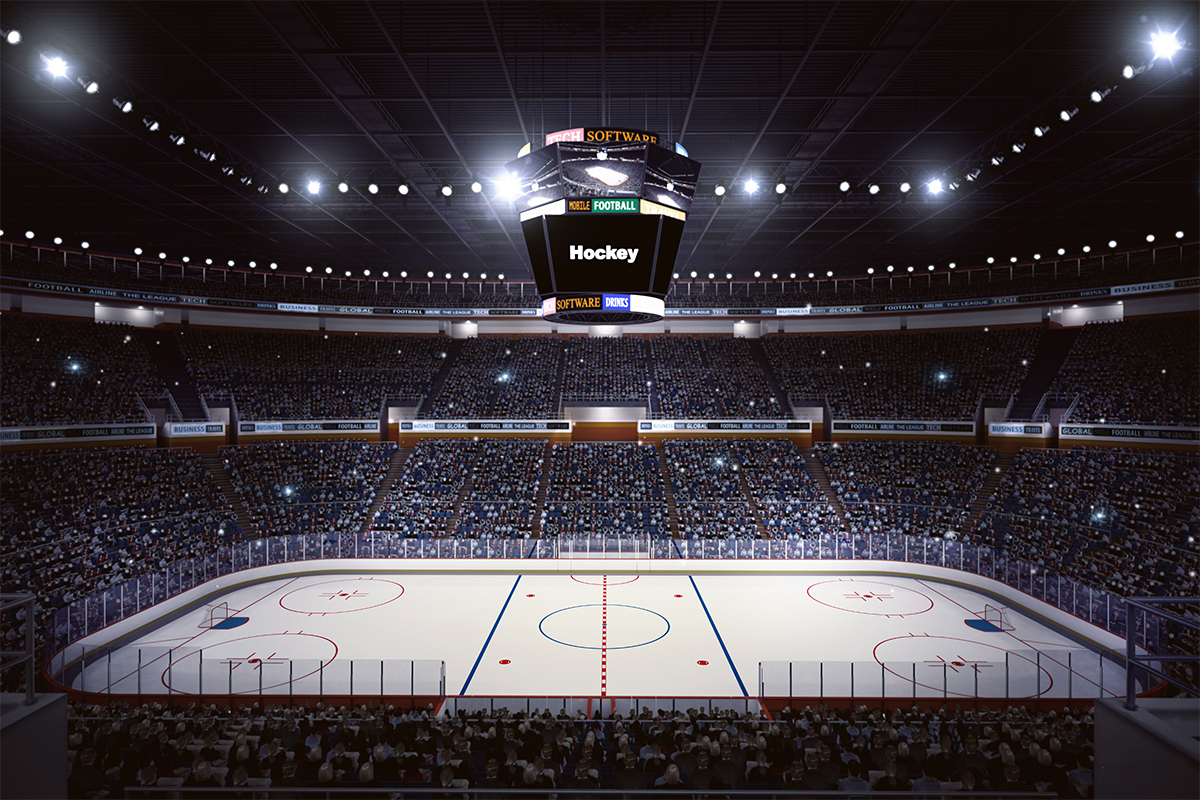
Illuminance requirements
When playing host to sports events, arena lighting must satisfy the competition needs, ensure that the spectators can enjoy a comfortable viewing experience, and meet television broadcasting requirement. The required quantity and quality of lighting in an arena vary among sports. Class I lighting for the basketball, figure skating, indoor soccer and arena football sports requires a horizontal illuminance of 1250 lx (125 ft), and the CV and UR should not exceed is 0.13 and 1.7:1 respectively. The recommended horizontal illuminance, CV, and UV for the ice hockey sport is 1500 lx (150 ft), 0.13 maximum, and 1.5:1 maximum, respectively. However, for large facilities which seat a minimum number of 5,000 spectators and often accommodate a capacity of 15,000 to 25,000 spectators, the lighting criteria are usually governed by the needs of broadcast cameras.
For quality TV broadcast of sports, the quantity and uniformity of the illuminance in both the vertical and horizontal planes should be high enough so that the close-ups of the participants can be revealed and the speed of the fast-moving playing target will not appear to be distorted in the screen. These requirements pose a great challenge to the performance and positioning of luminaires. While HID luminaires that use high wattage metal halide lamps are capable of delivering substantial volumes of lumens, they struggle with uniform distribution of light. These single-source fixtures project an excessive amount of illuminance over the center of the area towards which the beam is aimed. The areas farther away from the beam center are inadequately illuminated. To meet the uniformity requirement, the inadequately illuminated area needs to be luminously compensated by the beam of another luminaire, which results in increased installations of luminaires.
The technological revolution
Sports lighting has gone through a transition from HID to LED. The accelerated adoption of LED technology is driven by various factors such as improved energy efficiency, high optical manipulability, enhanced lighting controllability, extended product life, lower maintenance costs, and reduced environmental impact. The physical and optical characteristics of the semiconductor emitters offers the opportunity to advance beyond legacy optical designs.
The discrete light sources can be assembled in groups to form a surface emission device which, in conjunction with effective optical design exploiting the directional nature of LED light emission, is capable of delivering highly uniform, precisely controllable distribution of light across the target area. High uniformity of lighting not only contributes to the quality of sports lighting, but also enables massive cost savings due reduced lighting installations. Due to the high wattages and large number of installations typically involved, energy consumption is a major consideration for sports lighting.
LED lighting provides enormous energy savings beyond improved source efficiency. In addition to effective distribution of illuminance, the efficient extraction of luminous flux from the light source minimizes optical losses which are otherwise significantly large in traditional lighting systems. Integrating sensing, intelligence and networking into an LED system allows a lighting task to be accomplished at the lowest possible energy input.
LED systems can be designed and engineered to perform their required functions under practically controllable operating conditions for a period of time exceeding 50,000 hours with minimal maintenance, which results in huge maintenance cost savings. While lower wattage metal halide lamps may last as long as 20,000 hours, higher wattage lamps, such as the 1500W bulbs commonly incorporated in arena light fixtures, typically have a life expectancy in 3,000-hour range.
The spectral power distribution (SPD) of LEDs can be precisely engineered to create high color rendering white light in any shade. Moreover, color mixing at the luminaire level can produce dynamic colors, including tunable whites throughout the entire correlated color temperature (CCT) range and millions of saturated colors. This level of spectral controllability provides greater design flexibility in arena lighting applications which often have a need for customized lighting scenes.
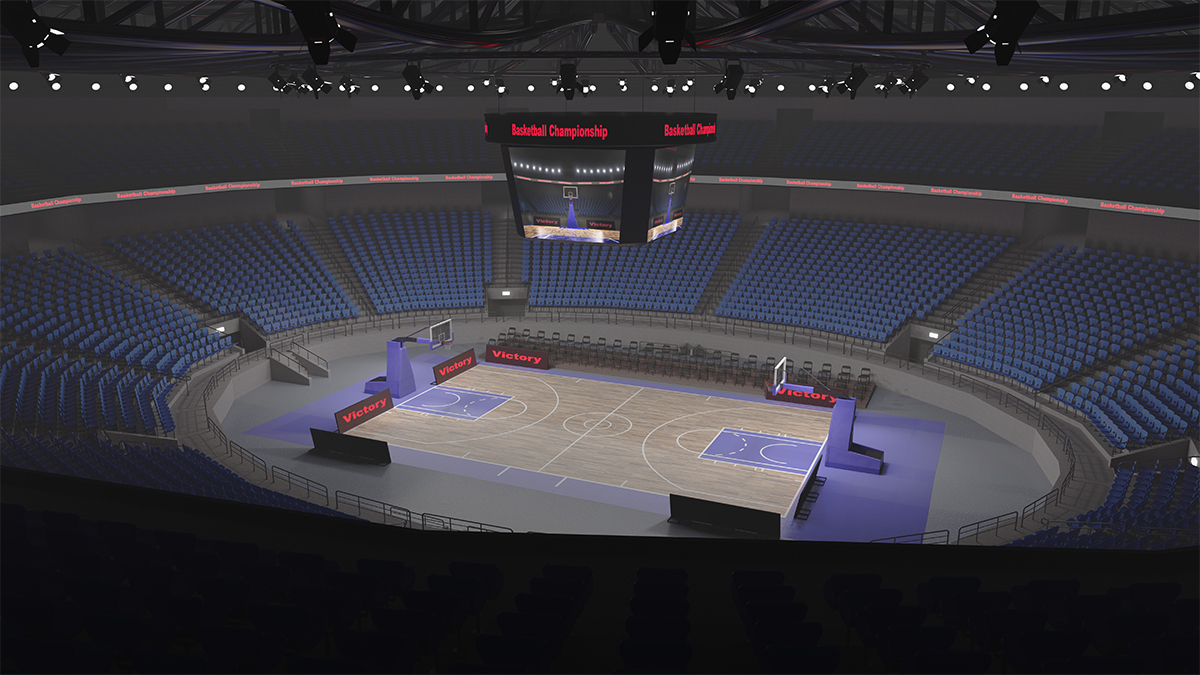
A multidimensional engineering work
LED arena lights are highly engineered systems that integrate multiple components to produce light in lumen packages between 30,000 and 200,000 lm per fixture. LEDs are current-driven semiconductor devices that are designed to perform their full capacity under a controlled environment. Because of the interdependent photometric, electrical and thermal characteristics of LEDs, achieving high levels of energy efficiency and system reliability from LED lighting involves complex systems design and a multidimensional engineering work. The electrical, thermal and mechanical systems of an LED arena light must work in unison to ensure that environmental or operational stresses applied to the LEDs are under control.
The initial cost of an LED luminaire is in trade-off with luminaire efficacy, color quality, flicker control, and system reliability. LED arena lights are significant capital expenditures. This is not only because they are high wattage lighting systems, but also because they need to be efficient and reliable. An inefficient high wattage luminaire is a drain on resource. Large sports facilities often present challenging maintenance problems and the cost of repairing or replacing high wattage luminaires can be significant, thus, long-life LED systems should be used. While the development of LED technology has now reached a point where the cost is affordable enough to make a switch, the initial cost of a high-performing, long-lasting LED luminaire is still impressive, but what is more impressive is its high return on investment (ROI) and low life cycle cost.
Design and construction
Although the design innovation of LED arena lights seems to have no limit, all LED systems include four basic components: the LEDs, optical system, heat sink, and driver. Typically, the LEDs are assembled in intimate integration with the optical system and heat sink to facilitate optical control and thermal management. In high power systems, this type of integration can occur at the luminaire level or result in a modular system. The luminaire-level integration of the three components creates an integrated system that produces light from a single assembly. A modular lighting system consists of a number of light engines which are assemblies of the three components—LEDs, optics, and heat sink.
Integrated LED luminaires are usually lower-power systems, but it’s not uncommon to see ultra-high power systems (1000W+) in an integrated design. Modular construction brings a significant amount of options and customizations to luminaire configurations and facilitates fixture upgrades as LED technology advances over time. A great number of ultra-high power LED luminaires are designed as modular systems. The LED driver or drivers are usually mounted externally. An integrated LED arena light may incorporate the LED driver into the luminaire enclosure, but adequate thermal isolation should be provided to prevent the thermal load of the high power LED system from degrading the temperature-sensitive circuit components.
Light source
LED arena lights take advantage of high power LED packages to deliver an impressive amount of light. The use of ceramic substrate dramatically reduces thermal resistance of package and allows the LED chip to operate at high power density. Chip-scale package (CSP) LEDs further reduce the thermal resistance by removing as many of the packaging elements found in conventional LED packages as possible, resulting in reduced failure points and a shortened thermal path. CSP LEDs are finding their way into high power applications.
Despite their lower luminous efficacies when compared with the mid-power PLCC LEDs, ceramic-based high power LEDs and flip-chip CSP LEDs can deliver excellent lumen maintenance under thermal and electrical stresses that’re overwhelming to the mid-power LEDs. Mid-power LEDs are inherently plastic packages. The materials of construction are prone to thermal and photo degradation. The resulting discoloration causes color shift and lumen depreciation.
While different LED package platforms create LEDs with different levels of luminous efficacy, lumen density and reliability, the color characteristics of the LEDs are defined by their spectral compositions. The correlated color temperatures (CCTs) of sports lighting systems are usually at the cool side of the Kelvin scale (above 4000K). The enhanced blue in the spectrum of cool white light can stimulate the participants to alertness and activity. Economic factors also come into play when selecting the CCT. Higher-CCT LEDs have a higher efficacy than lower-CCT LEDs because they experience less Stokes losses during the spectral down-conversion process at the phosphor layer and the resulting SPD improves conversion by the eye sensitivity. To address the requirement for flexibility in adjusting the ambience for multi-use spaces, LED arena lights may be designed as tunable white systems or RGBW/RGBA color mixer systems.
For the same reasons, the color rendering performance of the LEDs is also in a trade-off with the luminous efficacy. In high-end applications, the color rendering index (CRI) or the color metric evaluated by a more accurate method (e.g., the IES TM-30-18) is often in the premium range. In order for the HD image sensor in the video camera captures a high fidelity image, the light source should be evaluated for its spectral compatibility with the image sensors and ensure the television lighting consistency index (TLCI) is no less than 85.
Thermal engineering
Thermal management is one of the key components that go into the design of LED arena lights. LEDs generate a substantial amount of heat at the semiconductor junction and phosphor layer. A high power LED luminaire incorporates a large number of high power density LED packages which not only deliver high lumen output but also create high volumes of heat. The performance of LEDs is tied to their junction temperatures. Overheating the semiconductor junction and surrounding structure of an LED package can accelerate nucleation and growth of thread dislocations in the active region of the diode and cause phosphor thermal degradation. Operating LEDs at high junction temperatures eventually lead to reduced device efficiency (lumen depreciation), shortened lifespan or catastrophic device failure due to thermal runaway. Therefore, the waste heat generated within the semiconductor packages must be transferred to the ambient air through all the heat dissipation elements that make up the thermal path.
To reduce the junction temperature, each thermal resistance in the path from LED junction to ambient air should be minimized. The high power light engine of an LED arena light produces a considerably large thermal load. Heat transfer rates of the system thermal path must outpace the load rate to prevent a buildup of heat. Construction of a robust thermal path calls for formation of high reliability, high operating temperature capable interconnects as well as the use of a metal core printed circuit board (MCPCB) with high thermal conductivity, very high dielectric strength and volume resistivity.
The heat sink design is decisive in thermal management. Most LED arena lights use passive heat sinks which rely on physics to dissipate heat. The heat sink is typically constructed from die cast, cold forged, or extruded aluminum and forms one piece with the housing to improve thermal conduction and convection. The heat sink must have a sufficient physical volume for absorbing the heat generated from the LEDs and provide an adequate surface area to maximize contact with the surrounding air for efficient convective cooling. When there’re physical constraints to heat sink design, heat pipes may be added to aluminum heat sinks to increase the cooling capacity.
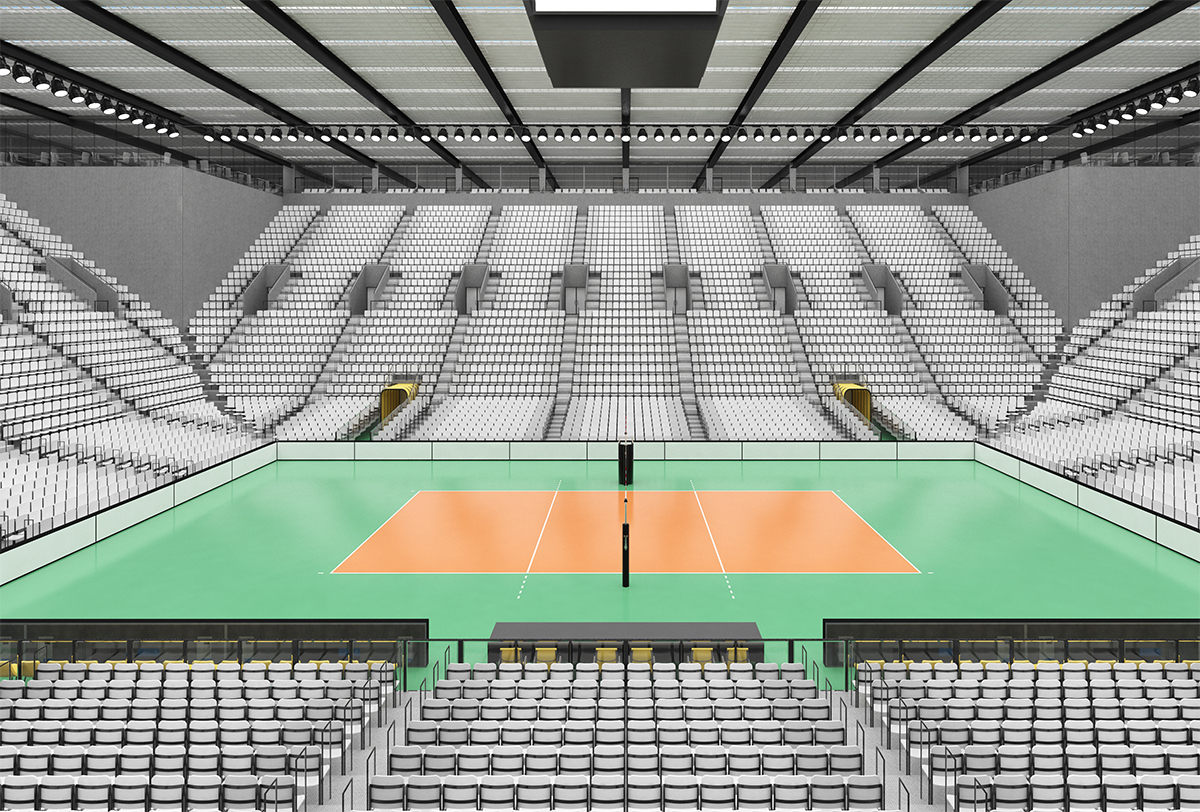
Optical engineering
LED arena lights are generally designed as aimable floodlighting systems because they’re usually mounted high around the distant court perimeter. Floodlights for sports arena lighting come in light distributions from narrow beam (for illuminating playing areas at a distance or modelling) to wide beam (for illuminating close-up areas). The beams may be in symmetric, asymmetric, or rectangular patterns.
A high performance optical system is often just as important part of an LED luminaire as the driver and heat sink. The optical system must enable more uniform light distribution which is critical to the visual performance of the players and the quality of TV broadcast. It must also contribute to control of obtrusive light that falls outside the area to be illuminated and causes visual discomfort to players and spectators. Another important objective of optical design to achieve a highest possible utilization efficiency (the ratio of light emitted by a luminaire to the light emitted by its light source). Improving optical delivery efficiency is meaningful to high power applications because every percent of optical losses means a big energy waste.
The most efficient way to provide efficient, precise optical control for LEDs is to use optical lenses that are custom designed for optical regulation of luminous flux from each individual LEDs. To maximize optical efficiency, the optics must be in close contact to the high power LEDs. However, optical lenses are usually injection molded from acrylic or polycarbonate. The heat from the LED chip plus the heat generated in the phosphor matrix (Stokes heat) creates high thermal stresses.
Acrylic lenses, therefore, should not be used in high power LED systems because of their low thermal stability. While polycarbonate lenses have improved thermal stability, their long-term performance should be carefully evaluated as the surface temperatures of high power LEDs can sometimes be too high for the optics to handle. Alternative optics such as lenses made from silicone and glass, or precision engineered aluminum reflectors find their use in thermally challenging applications.
Driver and control circuitry
The LED driver is the component that regulates power to the LEDs. One of the most important performance variants for an LED driver is the quality and consistency of the DC output voltage. The electronic device must provide tight load regulation to deliver a constant quantity and quality of power to the LEDs. It also handles line-voltage fluctuations, provides harmonic reduction and power factor correction (PFC), and protects the LEDs from abnormal operating conditions while converting incoming AC power to DC power.
LED drivers designed for use in high power LED arena lights typically adopt a two-stage solution to perform high efficiency power conversion, achieve high surge immunity, and reduce the ripple in the LED current. These device capabilities are crucial to the efficient, reliable, and flicker-free operation of the lighting systems.
Flicker control is especially a priority in Class I sports lighting applications. Flicker in lighting can not only cause blurred vision, eye fatigue and impaired visual perception which impact player performance, it may also cause stroboscopic effects that can distort visual perception of fast-moving playing objects. Video cameras are highly sensitive to flicker. The presence of flicker can affect the quality of super-slow-motion replays during HDTV broadcasting. Flicker occurs when there are sufficiently large ripples in the DC current provided to the LEDs.
A two-stage LED driver provides suppression of the alternating waveform after rectification and smooths out the output current ripple delivered to the load, which enables flicker-free lighting. The driver circuit design also dictates the controllability of an LED luminaire.
Many drivers allow PWM or CCR dimming of the connected LEDs and accept control input from a light controller that communicate with the driver using 0-10VDC, DALI, DMX, or a wireless networking protocol.


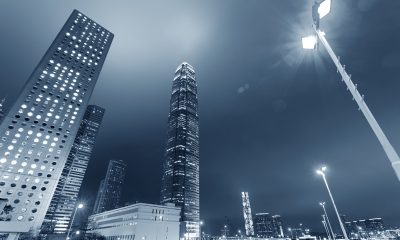
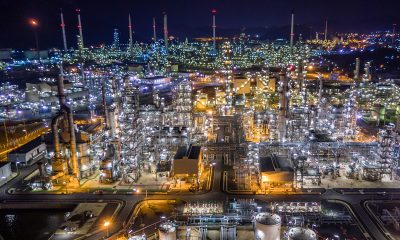
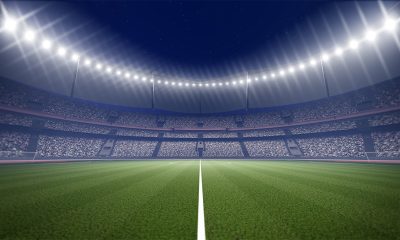
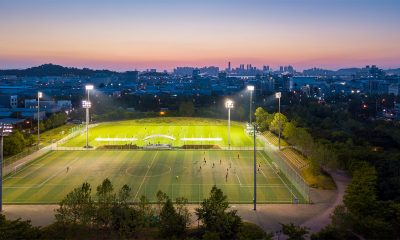
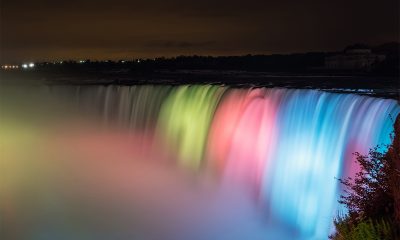
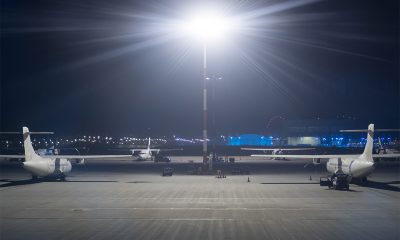
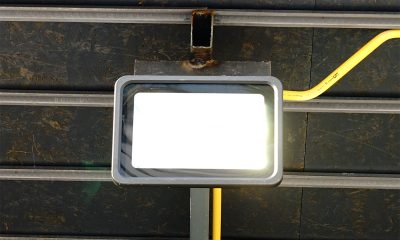
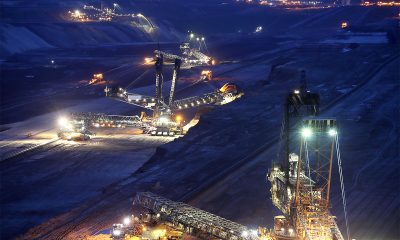
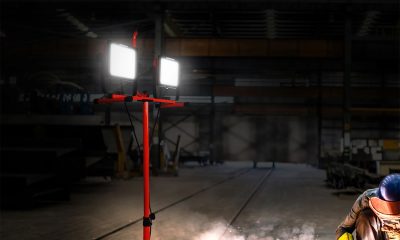
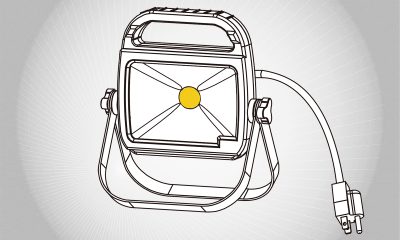
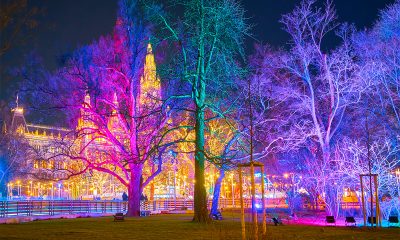
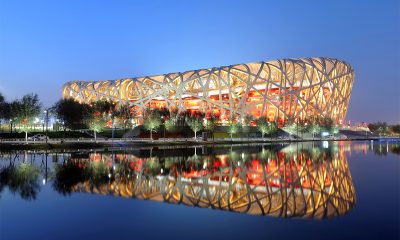





Loading...